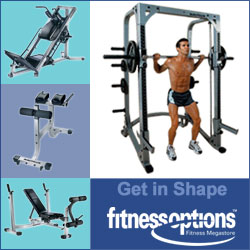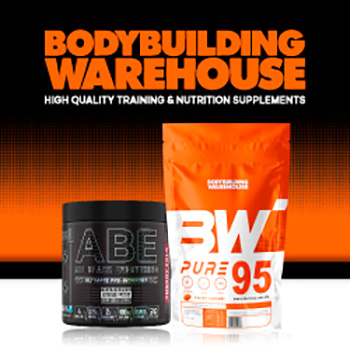
Best Functional Fitness Workouts
Key Takeaways: Discover the best functional fitness workouts to boost your strength and flexibility efficiently.
- Fitness plateaus are normal physiological responses, not signs of failure, and typically occur as your body adapts to consistent training stimuli.
- Manipulating training variables like changing rep ranges, rest periods, and exercise order can shock your muscles into new growth without requiring a complete program overhaul.
- True progressive overload goes beyond simply adding weight and includes increasing volume, improving technique, and enhancing mind muscle connection.
- Strategic nutrition adjustments including calorie cycling and addressing micronutrient deficiencies can reignite progress when training changes alone aren’t sufficient.
- Plateaus provide valuable feedback about your current approach and create opportunities to develop a more sustainable, enjoyable fitness journey with VitalFit’s guidance.
You’ve been putting in the work consistently for weeks or months. Then suddenly, progress stops. The weights feel heavier, the miles seem longer, and the mirror shows little change. This isn’t just frustrating. It’s a critical moment in your fitness journey that determines whether you’ll keep advancing or remain stuck. VitalFit’s comprehensive approach to breaking plateaus combines scientific training principles with practical strategies. These work in real world situations, not just theory.
Every fitness plateau tells a story about what your body needs next. Far from being a roadblock, these challenging periods are actually signposts pointing toward your next evolution as an athlete. By understanding why plateaus happen and having a systematic approach to overcome them, you’ll not only break through your current stagnation but develop the skills to handle future plateaus with confidence.
Article at a Glance: Breakthrough Tactics for Fitness Plateaus
This guide walks you through eight proven strategies to overcome fitness plateaus. These range from training manipulations and nutrition tweaks to recovery optimization and mind set shifts. Each strategy builds upon the last, creating a comprehensive system for continuous progress. Whether you’re struggling with strength gains, endurance improvements, or body composition changes, these techniques address the physiological and psychological factors that cause plateaus. They provide actionable solutions to overcome them.
Rather than jumping randomly between workout programs hoping something works, you’ll learn how to make strategic adjustments. These adjustments are based on your body’s feedback. The emphasis throughout is on sustainable progression changes you can implement consistently. These are without burning out or risking injury. By the end, you’ll have a toolkit of plateau busting techniques. You can deploy these whenever progress stalls.
Why Your Fitness Progress Has Stalled (And Why It’s Actually Normal)
Fitness plateaus aren’t failures. They’re expected biological responses to consistent training. Your body is an adaptation machine, constantly seeking homeostasis. When you first begin training, your body faces a novel stimulus. It responds dramatically with rapid strength gains, improved endurance, or visible body composition changes. This is the “newbie gains” phase where progress comes easily and consistently.
As training continues, your body becomes more efficient at handling the workload. Your neuromuscular system optimizes movement patterns. Meanwhile, your cardiovascular system strengthens, and your muscles become more resilient. These adaptations are precisely what you’ve been working for. However, they come with a price, the same workout that once challenged you now barely registers as a stimulus for further change. This efficiency paradox is the primary physiological driver of plateaus.
Additionally, plateaus often coincide with lifestyle factors that may have shifted without your awareness. For example, sleep quality might have declined due to increased work stress. Nutrition might have become less consistent as initial motivation wanes. Recovery capacity could be compromised from accumulating training fatigue. These external factors compound the biological adaptation process, creating the perfect storm for stalled progress.
Strategy 1: Shock Your Body With Training Variables
The most immediate way to break through a plateau is by manipulating training variables. This creates novel stimuli for your muscles and nervous system. This strategy doesn’t require a complete program overhaul. Instead, just strategic adjustments to key variables that force your body to adapt in new ways. Think of it as speaking a slightly different language to your muscles so they can’t anticipate what’s coming next.
Change Your Rep Ranges for Immediate Results
If you’ve been consistently training in the 8-12 rep range (typical for hypertrophy), your body has optimized its response to that specific stimulus. Temporarily shifting to either strength focused sets of 3-5 reps with heavier weights or endurance focused sets of 15-20 reps with lighter weights forces different muscle fibre recruitment patterns and metabolic responses. This simple adjustment can trigger new adaptations even when using the same exercises. For more strategies, check out these tips to overcome fitness plateaus.
For example, if bench press progress has stalled at 185 pounds for 3 sets of 10 reps, try 205 pounds for 5 sets of 5 reps for two weeks. Then return to your original rep scheme. You’ll likely find you can now handle more weight or reps in your standard range. This technique works because different rep ranges develop complementary qualities that transfer between domains. Strength work improves neural efficiency while higher rep work enhances metabolic capacity and blood flow.
Rest Period Manipulation: The Overlooked Progress Trigger
Rest periods between sets are often treated as an afterthought, but manipulating this variable can dramatically change training outcomes. If you typically rest 2-3 minutes between sets, try condensing rest periods to 60-90 seconds. This increase in metabolic stress and growth hormone release can be beneficial. Conversely, if you’ve been using short rest periods, extending them to 3-5 minutes can allow for greater strength expression and neural recovery. This may potentially break through weight plateaus.
This approach is particularly effective for compound movements. Examples include squats, deadlifts, and presses. The increased workload density from shorter rest periods creates a powerful growth stimulus. This differs significantly from your body’s accustomed patterns. Just be prepared for the intensity. Condensed rest periods make even familiar weights feel substantially heavier due to incomplete ATP replenishment between sets.
Exercise Order Reversal: A Simple But Powerful Change
The sequence of exercises in your workout creates specific fatigue patterns that influence performance throughout the session. By simply reversing your typical exercise order, you expose muscles to different stimuli. This occurs when they’re fresh versus pre fatigued. This reshuffling requires zero additional equipment or time investment. However, it can spark new progress by emphasizing previously undertrained aspects of movements. To learn more about overcoming fitness plateaus, check out these strategies to keep progressing.
For instance, if your leg day always begins with squats followed by lunges, leg press, and hamstring curls, try starting with hamstring curls and working backward. You’ll likely find you can handle more weight or volume on movements that typically come later in your workout. This creates new growth stimuli. This technique is especially valuable for addressing lagging body parts. These might be chronically undertrained due to consistent end-of-workout fatigue.






